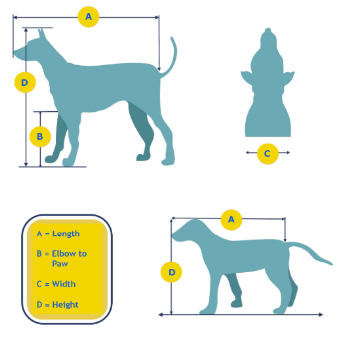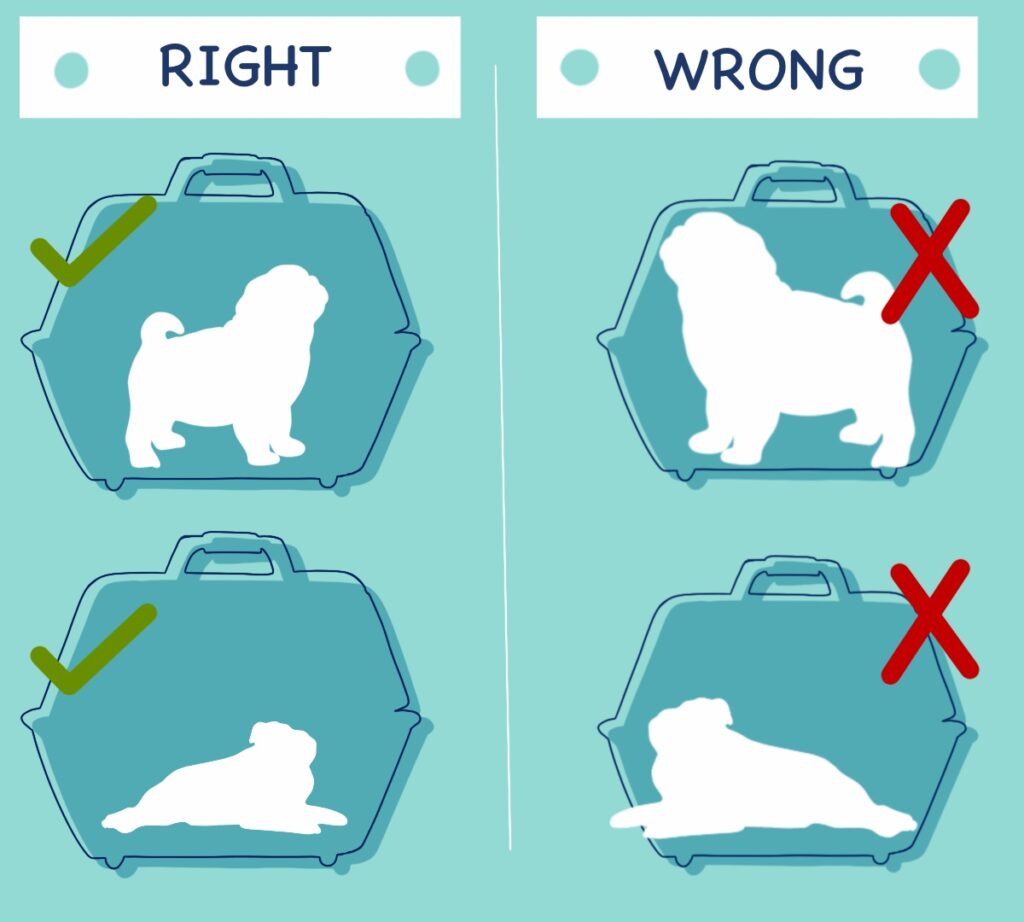What is a pet transport service?
Pet Transport Service Providers are cargo forwarding firms dedicated to pets or live animals. Moving a cargo requires mastery of transport principles and guidelines. Moving pets requires knowledge on animal behavior, animal handling and genuine animal compassion.
Why should you avail the services of a Pet Transport Service provider?
Moving animals locally and globally is not without risks. Stress is always around the corner. A pet cannot speak for himself, and understanding animal behavior is not a language everyone speaks.
A pet transporter treats pets with sensitivity, gentleness and compassion. It provides better comfort and understanding to a pet’s threshold and can predict potential inconveniences the pet might face in its endeavor throughout its journey.
A pet transport service provider understands that your pet is a FAMILY, not merely a cargo.

Frequently asked questions
Pet Transport Preparation
In order to correctly measure your pet’s height, you need to get him to stand in his normal standing or stacking position.
Make sure the head is lifted up as shown in the diagram below.
The height measurement will start from the ground up to the ear tips for pets which have erect ears and up to head top if the ears aren’t standing up.
The length measurement will start from the nose up to the buttocks area.


After measuring your pet’s height and length, you’ll have an idea on which crate size to look for. Make sure that all sides of the crate has holes for ventilation and that your pet can move turn around comfortably.
If you’re pet is brachycephalic or snub nosed, pick a crate that’s one size larger for him. See the diagram below.
For Snub- Nosed Pets

For Non-Snub Nosed Pets

There’s no single formula to ensure that our pet will travel stress free. Every pet owner has to understand that there are a lot of stressors for our beloved critters. An unfamiliar environment, new sounds, new voices, new
people, unfamiliar routines and such all contribute to our pet’s stress levels.
There are a few things we can do to prepare them for a long trip and possibly reduce their stress levels such as:
1. Crate Training
2. Early Socialization
3. Putting bedding / owner’s clothes inside the crate – Having an item with a familiar smell is proven to help reduce the anxiety pets experience during the trip.
As the old saying goes, practice makes perfect! If you have any plans of transporting your pet any time soon, get him used to his travel crate! Based from our experience, with pets of all shapes, ages and sizes, those
pets with prior experience to being inside a crate experiences less stress during their travel period.
To get your pet used to the crate, put him inside for small periods of time with the door open and with the door closed multiple times in a day till he gets used to it.
Since your pet will be traveling, having their favorite toys or other articles with them inside helps calm them down.
This is especially true if your pet has separation anxiety. Leaving an article of clothing with your scent in the crate will do wonders during their trip. This calms them down and eases their anxiety.
Having a full stomach on a long trip is a bit of an inconvenience for us humans and our pets as well. This is especially true for young puppies.
In order to help avoid motion sickness we recommend the following routine and feeding guide for your travelling pets:
For Small and Young Pets (Puppies, Kittens, Rabbits etc.)
- Fast your pet at least 4 hours before travelling. If not at all possible, let them relieve themselves before moving.
- Give them a soft diet in the form of soft kibbles or pate as their last meal before travel.
- DO NOT feed them an hour before moving!
- Make sure they have clean water accessible on their crate. You can add rehydration salts to your water or honey to give that extra boost.
For Adult Pets
- Fasting your adult pet should start 6 hours before the trip but remember to consult your veterinarian first especially if your pet has special needs.
- Prepare a soft diet for your pet for long trips. This will lessen his motion sickness when in transit.
- Do not feed them an hour before moving!
- Always make sure to provide access to clean water for your pet.
We cannot stress it enough to provide clean water to your pet during their trip. You can buy attachable water bottles with nozzles as an accompaniment to their travel crate.
You can also add hydration salts such as dextrose powder, honey and other additives to make their water much more nutritious and effective in keeping them hydrated.
Remember that hydration is key to keeping your pet safe during his trip!
Vaccinations in pets can sometimes leave them with a fever due to the body’s reaction of adjusting to the shot thus we highly discourage pet owners to transport their pets at least 3 days after a vaccination especially
for small and young pets.
We highly advise to seek your veterinarian’s approval and conduct specific checkups to ensure that your pet will be fit to travel.
Certain airlines and countries ban specific breeds of dogs and cats due to them having a huge health risk during travel (for airlines) and due to the breed having known to be aggressive (for countries).
For AIRLINE restrictions, most snub nosed dogs and cats are banned on flights.
For DOGS, these breeds are usually the brachycephalic ones such as bulldogs, chihuahuas, shih tzus, pugs etc.
There are specific dog breeds that are restricted or even banned. These breeds are the ones classified as dangerous such as Pitbulls, Dogo Argentinos and the like.
For CATS, these breeds are also short snout in nature i.e. persian, exotics, himalayans and their mixes.
You can look into a specific airlines pet acceptance policy on their websites as these may vary from airline to airline.
This is a case to case basis but ideally, it is best to feed your pet a minimum of 4 hours before pickup.
Pets usually get anxious or stressed with unfamiliar environments, people and experiences thus some pets poop or pee as a coping mechanism. Should your pet poop while they are with our team, we will make sure that they
will be cleaned and their crates sanitized before we hand them over to the airline.
However, if your pet poops while they are with the airline, they may not be cleaned especially if the layover time is less than 2 hours since it’ll only be enough time to get your pet from aircraft A to B.
Rabies Titre Testing
The rabies titer test also known as rabies neutralising antibody titre (RNAT) test
checks for the presence of antibodies that neutralises rabies in your pet’s blood. The presence of the antibodies in sufficient amounts is a sufficient indicator that your pet has been vaccinated and is immune to rabies.
Since the Philippines is a country where rabies is prevalent, countries with low to zero rabies cases will require a RNAT test before allowing entry
to protect their local animals.
If your pet is traveling to a rabies free or low-case rabies country, then testing is required. These countries are (but not limited to):
Australia, Indonesia, Hongkong, China, Taiwan, New Zealand, Singapore, Japan, Qatar, United States of America, United Arab Emirates and all European Countries.
Your test result should show a result greater than 0.5 IU/ml to show that your pet is adequately immunized against rabies.
Exportation Guidelines
For our export service, we’ll act as both your EXPORT broker and TRANSPORTER.
As an EXPORT BROKER, we will be handling all pre-travel documentary requirements which includes inspections and customs clearances.
As your TRANSPORTER, we will be handling all transactions pertaining to the actual shipping itself. Such as but not limited to airline booking, IATA Compliant travel carriers, travel monitoring, transit
permits and freight charges.
An IMPORT BROKER is the export broker’s COUNTERPART who is responsible for the following in an international pet travel:
– Securing the IMPORT permit
– Settling customs duties, taxes and other import fees.
– Releasing your pet from customs
– Arranging for quarantine space and/or veterinary inspections upon your pet’s arrival at the airport
The services of an import broker vary from company to company and from country to country. There are countries that require them such as Singapore and the U.S.A while others don’t.
There are countries who implement different procedures in releasing pets going into their country. Sometimes, these procedures aren’t straight forward and would require a lot of time to comply with i.e. Singapore, Japan, South
Africa. This is where import brokers come in.
You can check with your destination country’s ministry of agriculture or customs office regarding their procedure and requirements for importing dogs. If it gets too complicated for you, you can always tap in the services
of import brokers.
We have an array of partners from different countries who can help you with the import requirements for your pet.
Importation Guidelines
An import broker is an individual or a company that will handle the documentary and importation processes required when your pet will come into the Philippines.
The broker’s job starts at securing the IMPORT permit up to customs releasing upon your pet’s arrival.
Importation processing refers to the steps, documentations and processes required to guarantee your pet’s passage into their destination country.
In the Philippines, our importation process starts with securing the import permit.
Before your pet can fly from the origin country, we have to ensure that we have an approved import permit. Otherwise we’ll encounter problems once your pet arrives without one.
Once you have an approved import permit and your pet arrives at the airport, your import broker will then process all the documentation, have your pet inspected and settle the duties, fees and taxes that need to be settled
before your pet is released from the warehouse.
An approved import permit is required before your pet enters the Philippines. Please make sure that you have this available before flying your pet into the country.
Absence of the import permit will result in your pet being held by animal quarantine, be sent to a third country while waiting for the permit or to be returned to origin at your expense.
